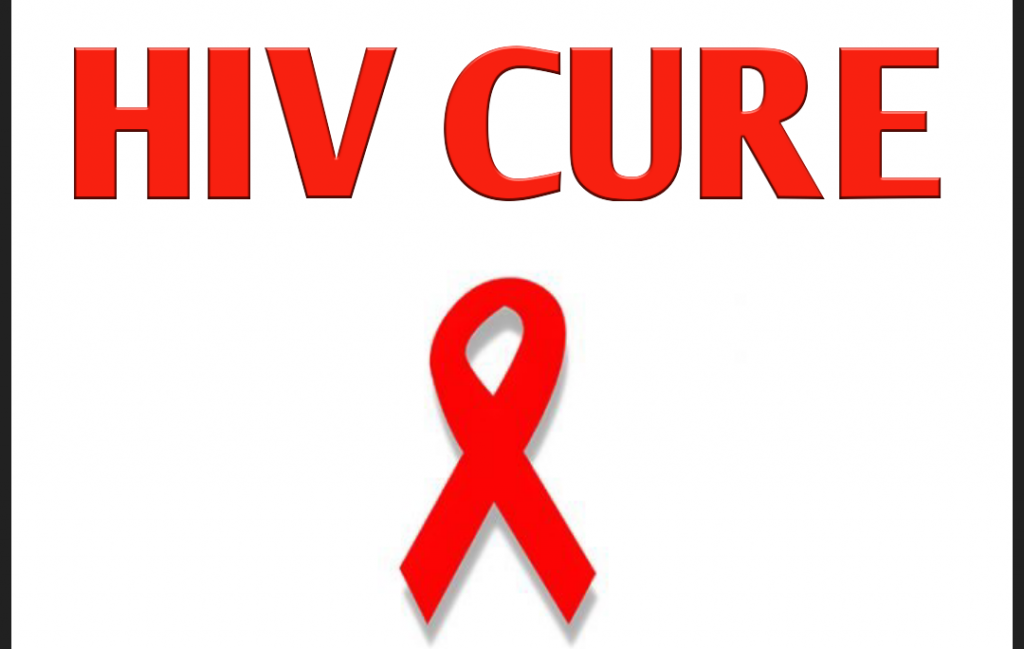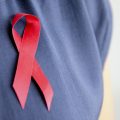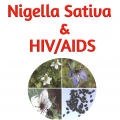HIV continues to be a major global public health issue, having claimed more than 35 million lives so far. Figures from 2 years ago showed that 940 000 people died from HIV-related causes globally. There were approximately 36.9 million people living with HIV at that time with 1.8 million people becoming newly infected globally. The African Region is the most affected region, with 25.7 million people living with HIV. The region also accounts for over two-thirds of the global total of new HIV infections. HIV infection is often diagnosed through rapid diagnostic tests (RDTs), which detect the presence or absence of HIV antibodies. Most often, these tests provide same-day test results, which are essential for same-day diagnosis and early treatment and care. An estimated 47% of new infections occurred among key populations and their partners. It is estimated that currently, only 75% of people with HIV know their status. Around 21.7 million people living with HIV were receiving antiretroviral therapy (ART) globally. There are five major types of ART’s used in this regard this includes:
Reverse transcriptase (RT) inhibitors: These are drugs that interfere with a critical step during the HIV life cycle and keep the virus from making copies of itself.
Protease inhibitors: These are drugs that interfere with a protein that HIV uses to make infectious viral particles.
Fusion inhibitors: These are drugs that block the virus from entering the body’s cells.
Integrase inhibitors: These are drugs that block an enzyme HIV needs to make copies of itself.
Multidrug combinations: These are drugs that contain two or more different types of medication that prevent the multiplication of the virus in the body.
These medicines help people with HIV, but they do not cure HIV/AIDS. People with HIV infection still have the virus in their bodies. They can still spread HIV to others through unprotected sex and needle sharing, even when they are taking these medicines.
Is there a cure for HIV?
In March this year, UNAIDS stated that it was greatly encouraged by the news that an HIV-positive man has been functionally cured of HIV. The man was treated by specialists at University College London and Imperial College London for advanced Hodgkin’s lymphoma in 2016 using stem cell transplants from a donor who carried a rare genetic mutation. Researchers report that HIV has been undetectable in the man since he stopped taking antiretroviral medicine 18 months ago. A cure for HIV is the total eradication of the virus from the body. Here are some of the strategies scientists and medical researchers are looking into for an effective cure for HIV:
Shock and kill Method
Current strategies and recent advances in the development of a functional cure for HIV-1, focusing on full/partial replacement of the immune system, ‘shock and kill’, and ‘permanent silencing’ approaches. These new treatments to eradicate HIV-1 are focused on the activation of viral production from latently infected cells to purge and clear HIV-1 reservoirs. This strategy involves the use of a wide range of small molecules called latency-reversing agents (LRAs). HIV hides in reservoir cells in the body and can remain silent as long as a patient takes antiretroviral therapy. As soon as a patient stops taking ARTs, the reservoir virus wakes up and starts replicating all around the body again. Shock and Kill would ‘wake up’ these reservoirs to activate the silent virus. Whilst counter-intuitive, the idea is to wake up every single virus and kill all the activated cells, destroying the reservoir in one go. If one virus survives then there is always a risk that it will be able to duplicate and the virus will return. Currently, scientists have identified drugs that will ‘shock’ or ‘wake up’ the silent reservoir cells. The next challenge is to identify a drug or method that can subsequently destroy these infected cells and avoid healthy cells. When destroying cells in the body, there is always a risk that drugs will target healthy cells, so this research moves carefully to avoid unnecessary damage. New studies indicate that Histone deacetylase inhibitors (HDACi) such as givinostat, belinostat, and panobinostat, and class I-selective HDACis include oxamflatin, NCH-51, and romidepsin, are the most advanced in clinical testing for HIV-1LRAs.
Lock and Block Technique
The ‘Lock and Block’ technique takes the opposite approach to ‘Shock and Kill’. This method aims to trap HIV in its reservoir cell so that it can never be reactivated. Whilst the virus is still present in the body, it is trapped away so that it cannot escape its host cell and cannot replicate. This technique is being looked into as an alternative to ‘Shock and Kill’.
How Lock and Block Mechanism Works
Since HIV integrates into the host genome, it can persist for life in a latent reservoir. HIV integrase (IN) uses the host co-factor LEDGF/p75 to target integration towards transcription units. LEDGINs, a new class of antivirals, block the IN-LEDGF/p75 interaction and allosterically inhibit IN (early effect). They also cause maturation defects and aberrant progeny virus. Scientists are currently testing drugs’ abilities to effectively trap HIV in a host cell without disrupting the genetic material of uninfected cells. Ideally, a drug would lock HIV away then deplete the reservoir so there was no possibility of the virus returning. Current issues that are being researched are drugs not locking away HIV tightly enough.
Stem Cell Transplants
A stem cell transplant replaces stem cells. It is used when stem cells or bone marrow have been damaged or destroyed by disease, including some types of cancer, or by high doses of chemotherapy or radiation therapy used to treat cancer. Bone marrow is the soft, spongy tissue inside your large bones. The bone marrow’s main job is to make blood cells that flow through the body. Stem cells are the most basic cells in the bone marrow, and they develop into different types of blood cells. There are 2 major types of stem cell transplant – allogeneic and autologous. In an allogeneic stem cell transplant, stem cells are removed from another person (a donor) and given to you (the recipient). In an autologous stem cell transplant, you provide your own stem cells. If you receive stem cells from your identical twin, this is called a syngeneic transplant. Only one man has ever been ‘cured’ of HIV. Timothy Ray Brown, otherwise known as the ‘Berlin patient’, was cured of HIV after receiving a stem cell transplant for another condition. Due to a rare genetic mutation in the donated stem cells, Brown’s immune system could fight off the HIV in his body. Over a decade later, he is still HIV-free and actively campaigning for HIV research and speaking about his experience. Brown was diagnosed with HIV in 1995 while studying in Berlin, Germany. In 2007 he underwent a procedure known as hematopoietic stem cell transplantation to treat leukemia (performed by a team of doctors in Berlin, Germany, including Gero Hütter). From 60 matching donors, they selected a [CCR5]-Δ32 homozygous individual with two genetic copies of a rare variant of a cell surface receptor. This genetic trait confers resistance to HIV infection by blocking the attachment of HIV to the cell. Roughly 10% of people of European or Western Asian ancestry have this inherited mutation, but it is rarer in other populations. Most people have the gene called CCR5 in their DNA. This produces a receptor on human cells that HIV can ‘latch onto’ and thus infiltrate the cell barrier. However, this donor had the mutation called CCR5 – delta32 which produces a receptor that HIV is unable to interact with. The virus can no longer invade human cells and the human host is resistant to HIV.
When Brown received the stem cells with this CCR5 – delta32 mutation, his body DNA adapted and he became resistant to HIV. However, the details behind why Brown was cured of HIV are complex and difficult to repeat. Even after repeating the procedure in other patients, their HIV has come back after a period in remission. There are still elements that scientists don’t understand enough to reproduce the results in other HIV-positive patients. Additionally, stem cell transplants are dangerous, expensive and require very specific donors otherwise the body can reject the new cells. Stem cell transplantation probably won’t become a mainstream avenue for an HIV cure.
HIV Vaccine
Two hundred years after the discovery of the vaccine by the English physician Edward Jenner, immunization can be credited with saving approximately 9 million lives a year worldwide. A further 16 million deaths a year could be prevented if effective vaccines were deployed against all potentially vaccine-preventable diseases. HIV Vaccine Awareness Day is observed each year to raise awareness and recognize the many volunteers, community members, health professionals, and scientists working to develop a vaccine to prevent HIV. It is also an opportunity to educate communities about the importance of preventive HIV vaccine research. A safe and effective preventive HIV vaccine is key to ending the HIV/AIDS pandemic.HIV research also includes efforts to develop a vaccine for HIV treatment (called a therapeutic vaccine). A safe and effective therapeutic HIV vaccine could prevent HIV from advancing to AIDS, replace daily use of HIV medicines, and help eliminate HIV from the body. Many HIV vaccines have been trialed and only one has had significant results. It is called the RV144 trial which started in 2003, in Thailand. A cohort received a trial vaccine and were tested for HIV three years later. From the volunteers, the rate of HIV was 31% lower in the cohort who received the vaccine compared to those who received the placebo. This study gave scientists hope that there could be a possibility for a vaccine. However, the strain of HIV found in Thailand is different from the strain found in sub-Saharan Africa, so the vaccine prototype needs to be adjusted to the strains of the virus that are most common in South Africa. There are projects to create a vaccination however, it is complicated to create a lasting vaccination. Researchers at the Desmond Tutu HIV Foundation, an HIV vaccine trial, HVTN 702. This trial, which began in 2016, is predicted to run for five years. HIV-negative, South African adults receive a series of injections at five different time points that rally the body’s defenses against HIV. If successful, this could be the biggest step towards a vaccine and we are closer than we have ever been. Some trial work has been done to create infusions that give participants protection, but the protection only lasts for a month or so before another dose is needed. Many diseases in the past have been close-to-eradicated, if not fully eradicated, thanks to vaccinations: polio, mumps, smallpox, tetanus, and measles to name a few.
Antiretroviral Therapy as a Cure
ART reduces the amount of virus (or viral load) in your blood and body fluids. ART is recommended for all people with HIV, regardless of how long they’ve had the virus or how healthy they are. ART also reduces your chance of transmitting HIV to others if taken as prescribed. Studies have shown that treating the virus within the first 48 hours of exposure can significantly reduce the size of the HIV reservoir hidden in the body. A unique study concluded that early HIV diagnosis and early antiretroviral therapy reduced early infant mortality by 76% and HIV progression by 75%. This method is suitable for certain people (e.g. newborn babies of HIV-positive mothers), but will not work for everyone. However, many people do not get access to HIV treatment early enough and many people do not realize they have HIV until months after they are first exposed. This is another reason why it is important to go for an HIV test regularly so that you always know your status and can act quickly if you do become infected.
Herbal Cures For HIV AIDS
The use of herbal medicine is increasingly becoming more popular in many countries. This practice has continued to be the main source of health care in rural communities, especially in developing countries, since modern medicine has not been able to solve the HIV question many are embracing herbal cures. HIV‐infected people and AIDS patients often seek complementary therapies including herbal medicines due to reasons such as unsatisfactory effects, high cost, non‐availability, or adverse effects of conventional medicines. Nine randomized placebo‐controlled trials involving 499 individuals with HIV infection and AIDS showed that a preparation called SPV30 may be helpful in delaying the progression of HIV disease in HIV‐infected people who do not have any symptoms of this infection. A Chinese herbal medicine, IGM‐1, seems to improve the quality of life in HIV‐infected people who do have symptoms. Another herbal compound, SH, showed an increase of antiviral benefit when combined with antiretroviral agents while a South American herb preparation, SP‐303, may reduce the frequency of abnormal stools in AIDS patients with diarrhea. The search for a herbal cure for HIV in Nigeria has reached an advanced stage, a pilot study conducted in the country to determine the effectiveness (clinical and laboratory responses) of α-Zam a combination of Nigella sativa and honey showed very promising results for HIV management. SEE: HIV Treatment in Nigeria.





